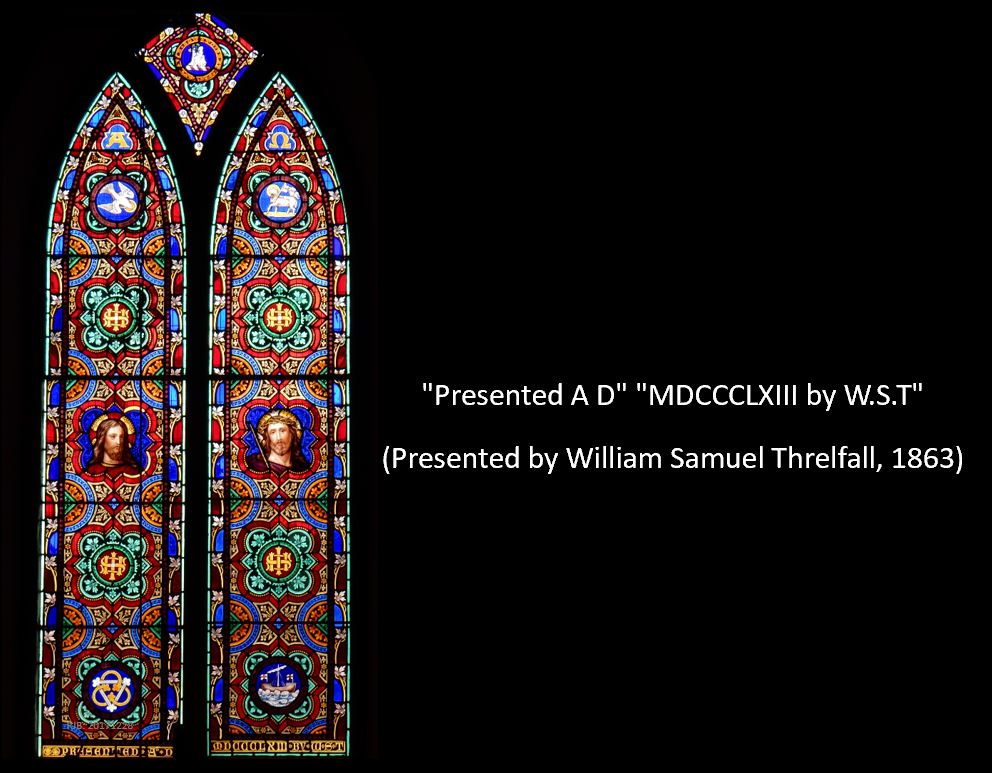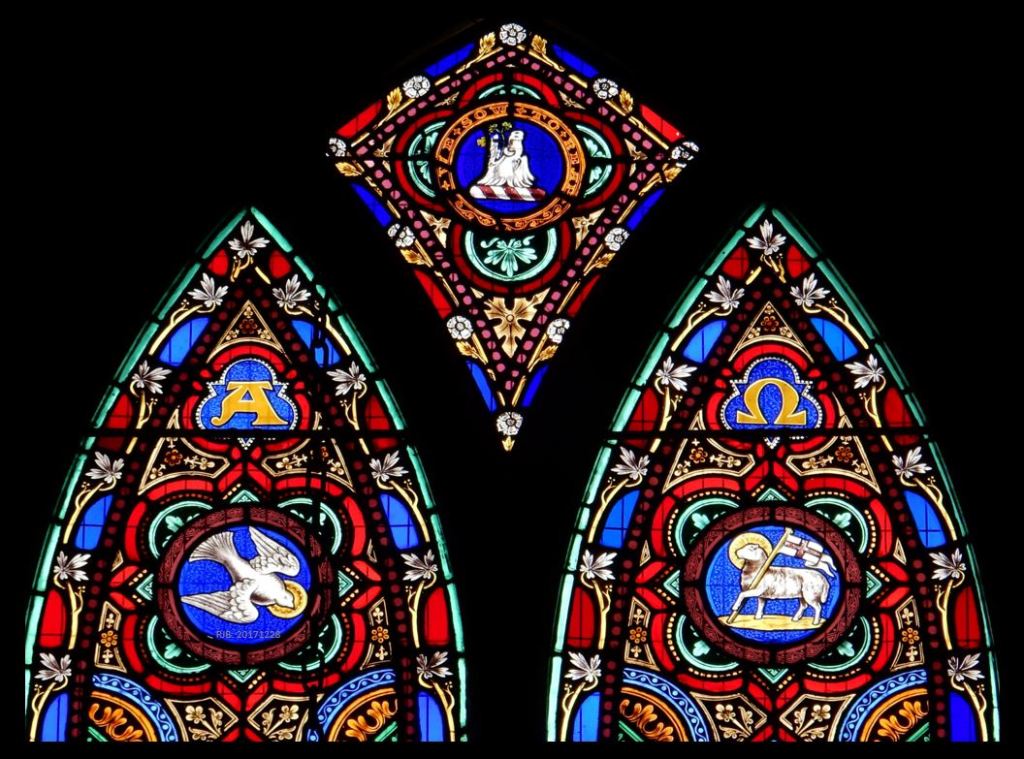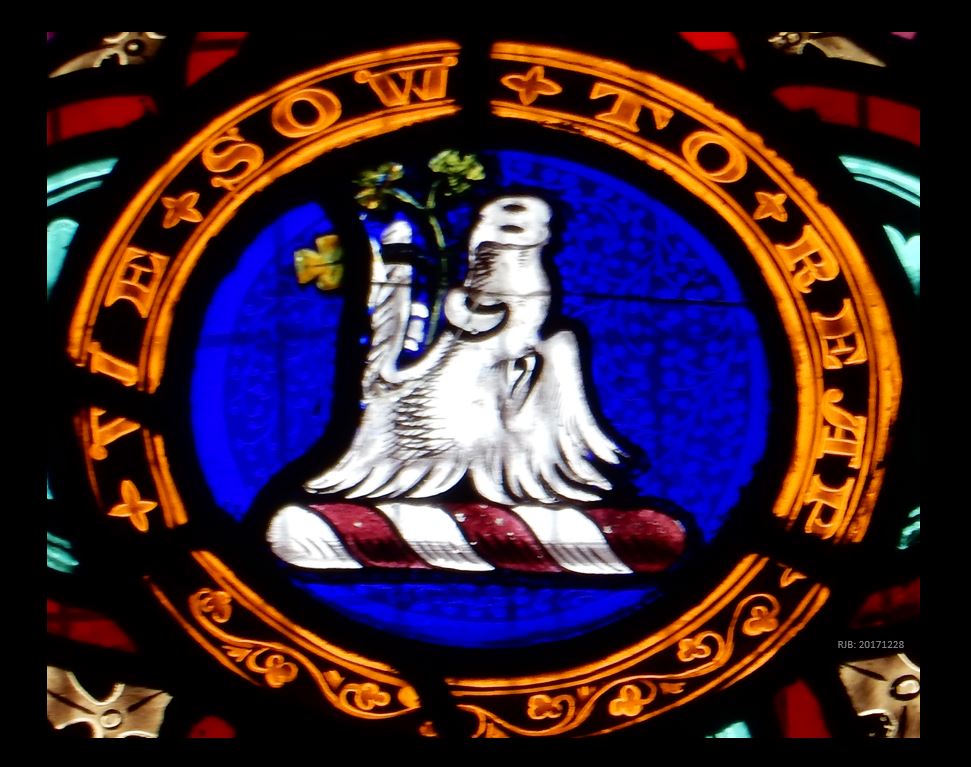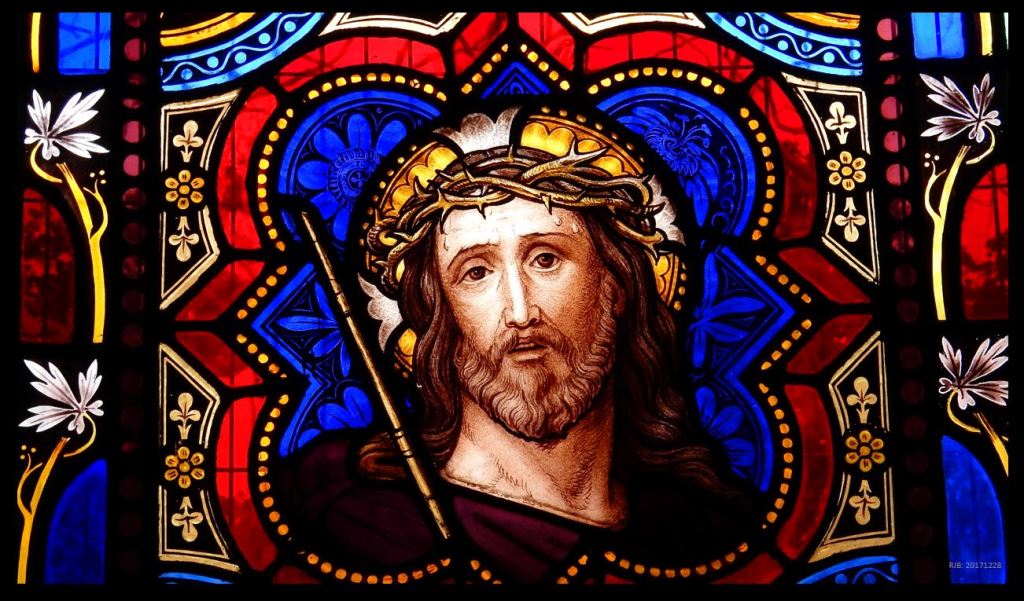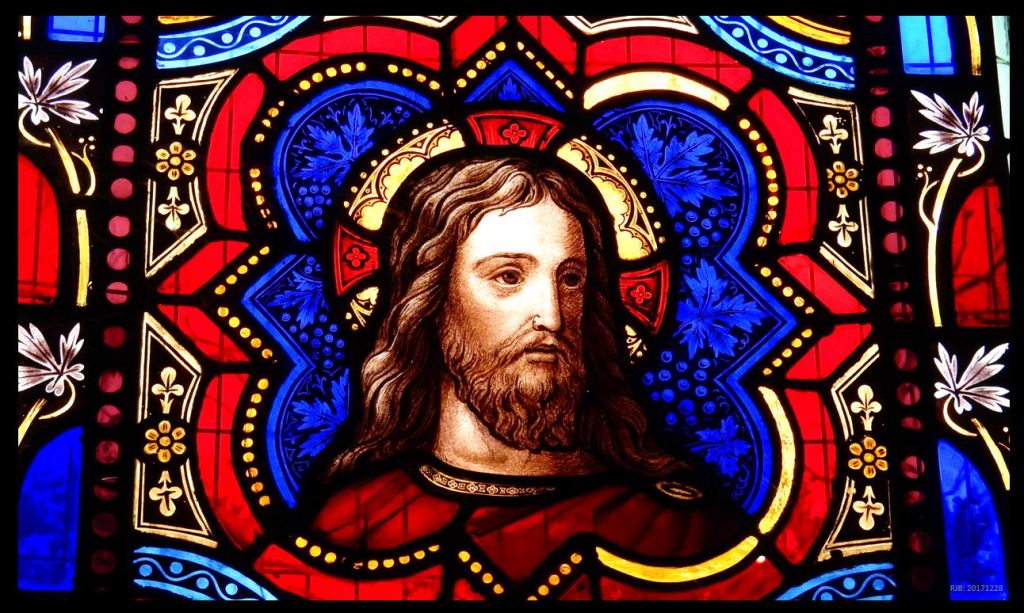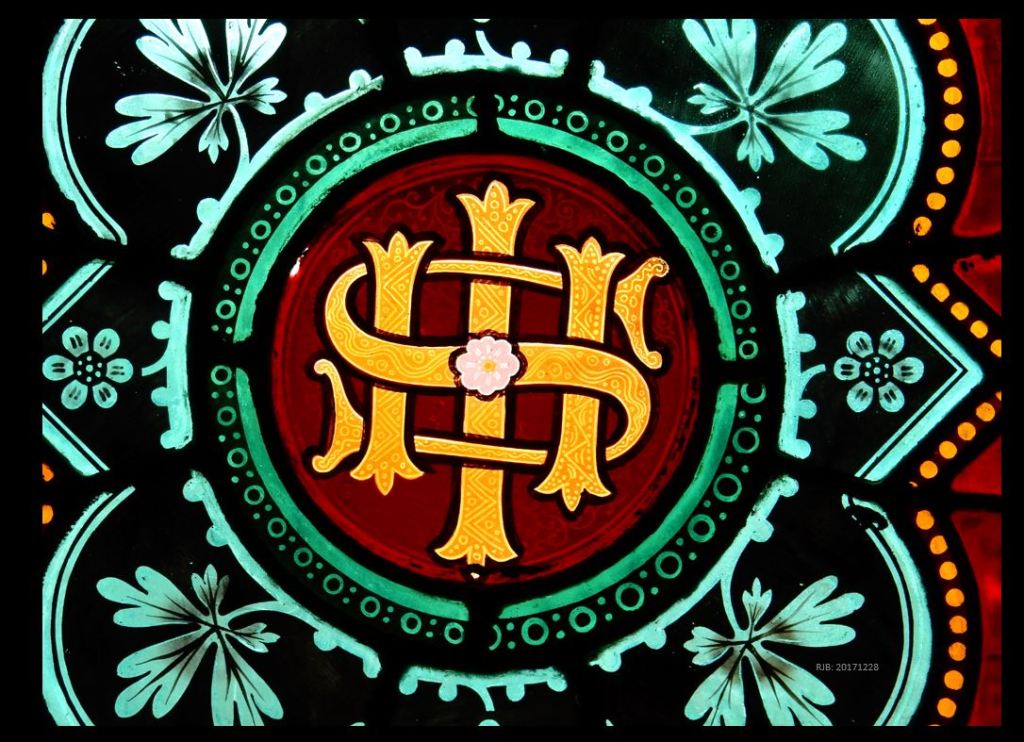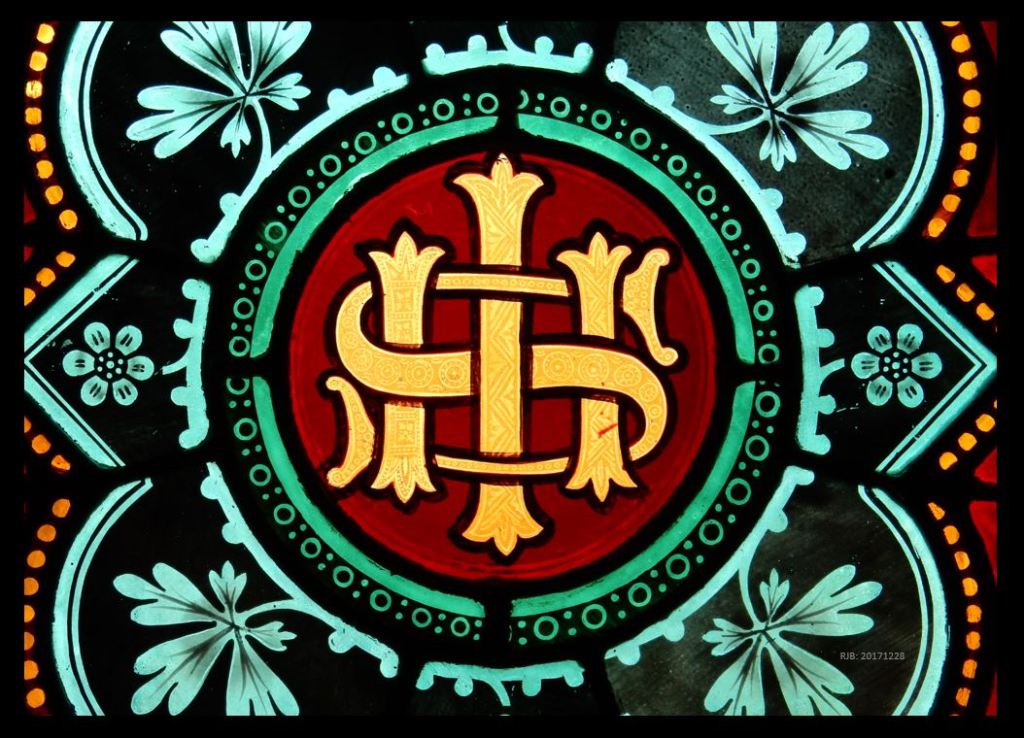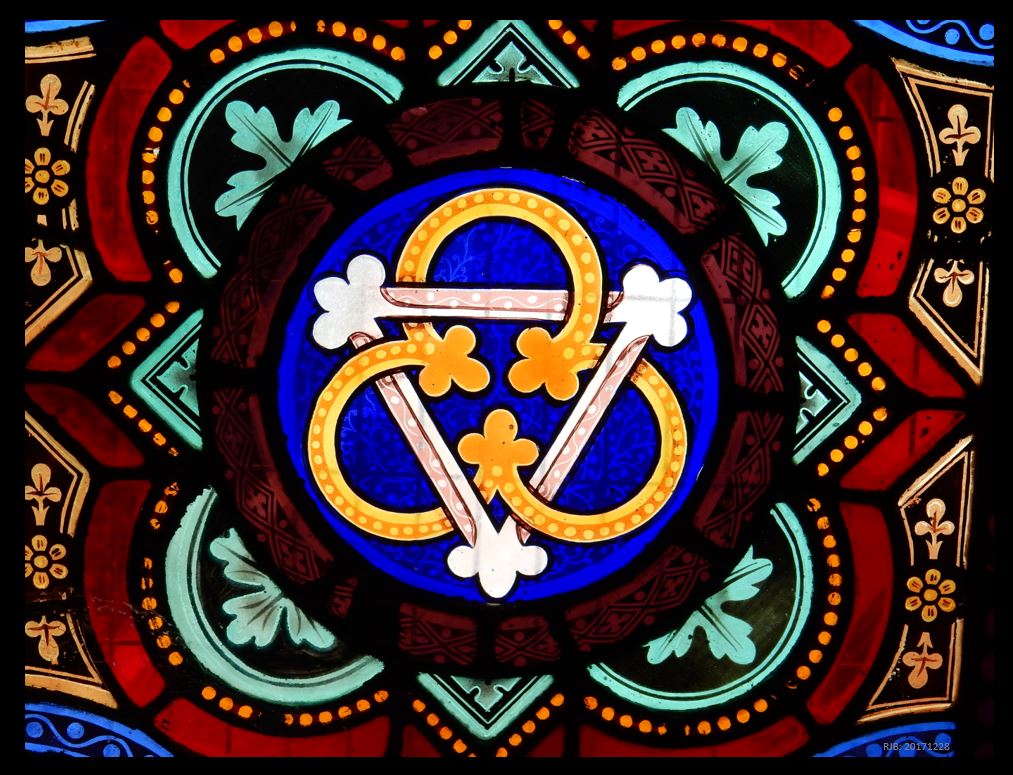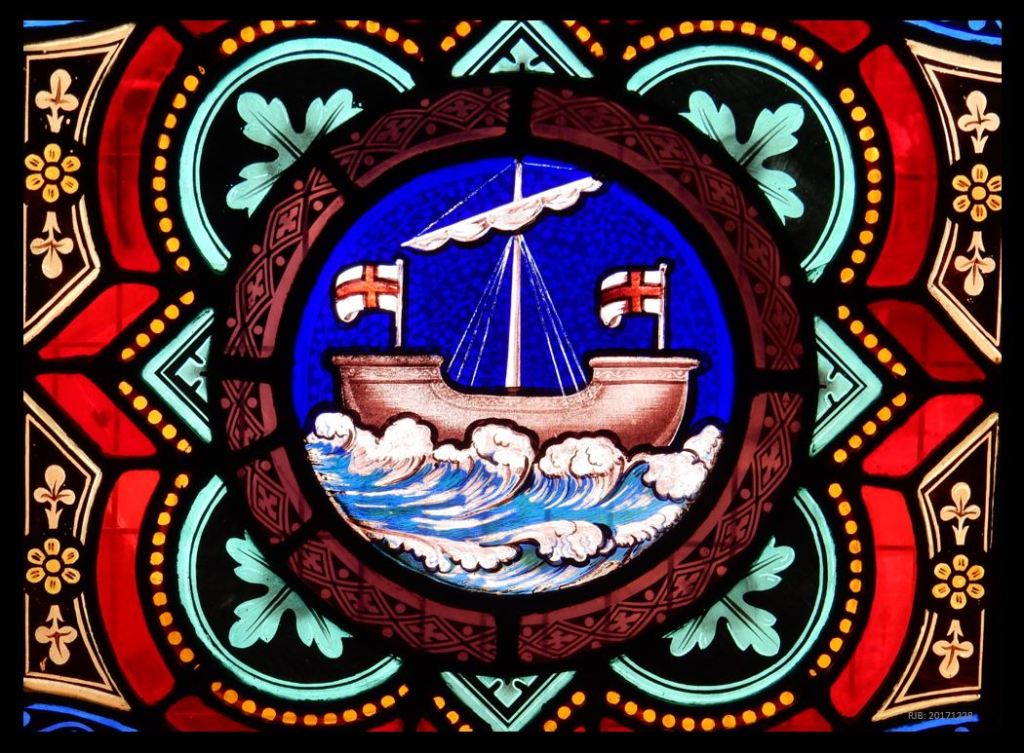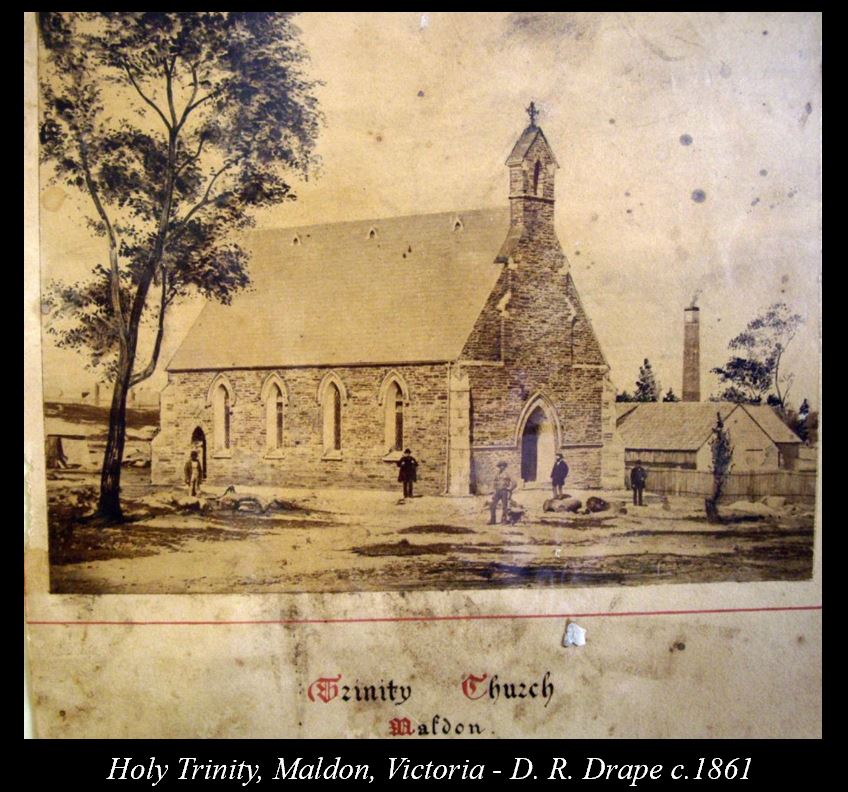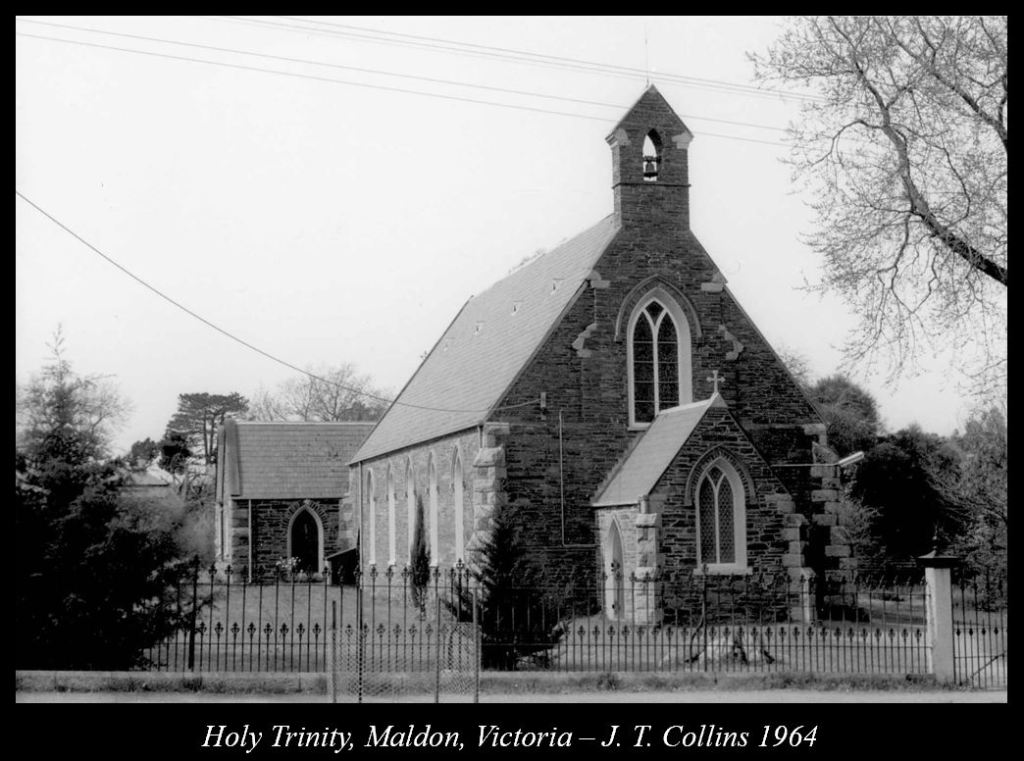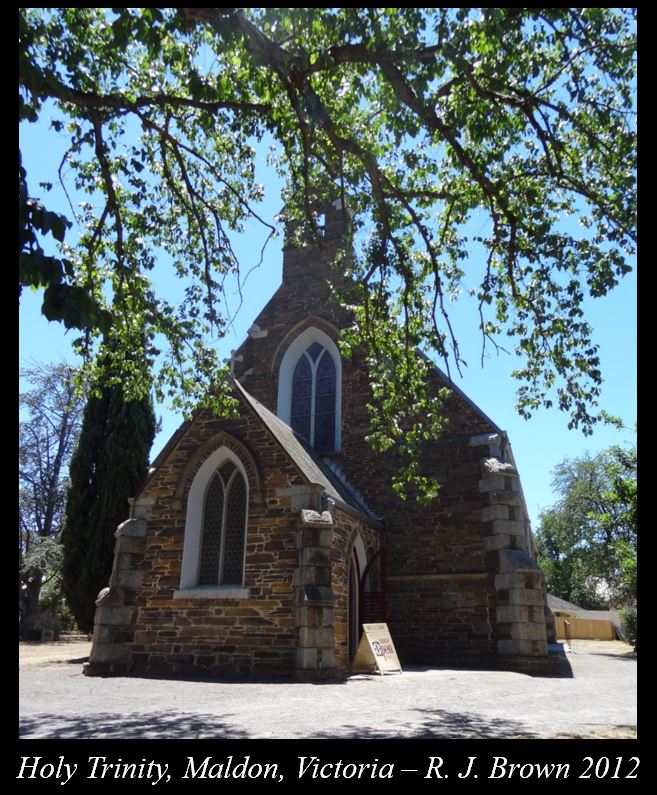#
The goldfield regions of Victoria are responsible for a lot of our pioneer history. A historic stained-glass window erected at Holy Trinity Anglican Church at Maldon in 1863 tells a significant part but in a historical perspective, a mere fraction of it. The window is now more than a century and a half old, it’s 157 as of 2020, the year of the worldwide COVID-19 virus pandemic.
On the third of May 1861, the Tarrangower Times reported that the £750 tender of Hornsby & Briscoe was accepted for the construction of Holy Trinity Church at Maldon and would be built to the designs of David Relph Drape.[1]
The foundation stone was laid on Wednesday 19th June 1861 by Archdeacon Crawford of Castlemaine [2] and it opened in October of the same year.
In late 1863, a local mining investor from Maldon named William Samuel Threlfall donated a two-light stained-glass window for the west end of Holy Trinity Church. Given that architect of Holy Trinity David Relph Drape was primarily a stained-glass artist by trade you could be forgiven for thinking that he would have some input in the design of the window or even some hands-on work with it. This may not have been the case.
Five years earlier, in 1858, Drape accepted an offer from James Ferguson of the Ferguson & Urie company of North Melbourne to emigrate to Australia from Carlisle, England, and be the company’s stained-glass artist in their new venture producing locally-made Colonial stained-glass windows. He arrived aboard the ship ‘Morning Light’ on the 20th September 1858 only to find that Ferguson & Urie’s stained-glass workshop in Curzon Street North Melbourne had not been built and there was no employment for him, so he decided to head for the goldfields town of Maldon in Central Victoria.
Why Drape chose Maldon specifically is not known, but there was plenty of demand for his skills there. Back in Carlisle Drape had been well acquainted with the Selby family and coincidentally, John Selby, closely followed by his sister Jane, had migrated to Australia earlier and settled at nearby Castlemaine eighteen kilometers southeast of Maldon. It’s a fair assumption that Drape’s heartstrings for Jane were the reason for many of his trips to Castlemaine, often by foot.[3] He married Jane Selby at the Congregational Church in Melbourne in 1864.
Drape became well known in Maldon in many different pursuits. He was the architect of many local Maldon buildings and his other skills included, draftsmanship, art, painting, illuminated testimonials, tombstone, and memorial tablets. He was also a board member of the Concord Quartz Mining company. There is no record of him designing or fabricating stained-glass windows during his time at Maldon.[4]
Coincidentally, in April 1861 a Scottish stained-glass artist named John Lamb Lyon arrived in Maldon with his wife Elizabeth. Why they chose Maldon is more obvious as John’s parents James and Janet had migrated to Australia earlier and established themselves as Maldon storekeepers and contractors for the local postal service.
A little over four months after their arrival in Maldon, John was in the process of submitting a design for a stained-glass window for the 1861 Melbourne Industrial Exhibition:
“Works of Art.- Mr John Lyon, lately arrived from England, on a visit to his father, a well-known old resident of this town, is now engaged on an elaborate design for an “Early English” stained glass window. It is intended for the forthcoming Exhibition, and space has been allotted him for that purpose. We consider Mr. Lyon a gentleman of great promise and sterling ability, and we cannot but hope that his work will attract such attention in Melbourne that he will be enabled to pursue his beautiful art in the colony with advantage to himself and the public. We are informed by gentlemen, we believe competent to judge that there is no Ecclesiastical glass painter of equal talent in the colony, at least not publicly known. Architects who in carrying out their designs have felt the want of such decorations will now have an opportunity of judging whether the talent of Mr. Lyon will fill the vacuum” [5]
I suspect that his stained-glass window design may have ended up being used as the design for the two-light window at St Margaret’s Church at Eltham in Nov/Dec 1861. That window is extant and currently the oldest Ferguson & Urie stained-glass window I have found to date. If a linotype or sketch of Lyon’s window for the 1861 exhibition were ever to be found it might solve or deny the mystery.
It would be incredulous not to think that Drape and Lyon did not become acquainted with each other in Maldon. Two stained-glass artists with similar tastes and artistic abilities in the medieval stained-glass craft in a small gold mining town in Australia is an extraordinary coincidence.
By late 1861 Lyon had joined the Ferguson & Urie stained glass company at North Melbourne and started the production of stained-glass from their new workshop in Curzon Street.
Drape had left Maldon by the end of October 1863 and started work alongside Lyon at Ferguson & Urie’s on the precise date of 8th November[6].
In late 1863 the stained-glass window for Holly Trinity had been completed and erected high in the liturgical west end. The exact date is not known. I can only broadly bracket it down to the latter half of 1863. The first mention of it is in early February 1864. One thing is certain, the window had to have been fabricated at the new Ferguson & Urie workshop in Curzon Street North Melbourne. Ferguson & Urie had the only known stained-glass workshop in Victoria at the time. Lyon was quoted for an interview for the Australian Decorator and Painter in 1909 that their inception was primitive:
“In 1861, Mr. Lyon joined the firm of Ferguson and Urie, Melbourne. Their commencement was on a very primitive scale. They made their own colours and acid, and fired the glass in a colonial camp oven. They, however, soon got properly going, and produced good work under the firm name of Ferguson, Urie and Lyon.” [7]– [8]
The Maldon window is a two-light in the English style and has the image of Jesus in the centre of each light. It certainly looks like Lyon’s style and the overall arrangement bears similarities to his other windows at Holy Trinity, Kew, and Christ Church, Kilmore. An article published in the Tarrangower Times in February 1864 states the Maldon window is his work. Whether Drape had any input or hands-on work with Lyon on the window may never be known.
“A great many of our readers will no doubt have observed the very handsome painted window in Trinity Church, presented by W. Threlfall Esq. As regards its intrinsic beauty, and its value as an ornament to what was already considered (we quote the Bishop of Melbourne’s remark, on the occasion of his last visit to Maldon) one of the prettiest little churches out of Melbourne; there can but be one opinion, but perhaps it is not so generally known that this window, reflecting as much credit on the liberal and public spirited donor, may be considered, as in some degree, the work of a Maldon artist; it having been designed, and fabricated, by Mr J. L. Lyon, the son of our respected fellow townsman Mr Lyon, of Main Street”[9]
A perplexing thing about the design of the window is a family crest depicting a boar’s head in the apex, presumably that of the donor William Samuel Threlfall. The crest appears above two images of Christ, the Holy Dove and the Lamb of God. The text at the base reads “Presented A.D MDCCCLXIII by W.S.T” (William Samuel Threlfall 1863). It’s not unheard of to see a family crest appear at the top of an ecclesiastical church window, but above the image of Christ or his symbology is extremely rare. Similar instances I have come across during research indicate that where the donor has elevated him/herself above Christ in an ecclesiastical window, it’s usually been met with a very harsh response by the congregation or church committee. The windows were usually forced to be re-made or modified. In extreme cases, a window was summarily sent back to where it came from.
Who was William Samuel Threlfall?
Threlfall was a native of Lancashire, England, and was a small-time mining investor in the Maldon district who had shares in failed gold mining ventures. Many articles of the time paint him as often owing money.
On the 2nd June 1864 at the age of 65, he married the widow Mary Ann Spence[10] at Christ Church, Castlemaine[11]. By November of the following year, he and his wife have disappeared from the Maldon area and dead letters addressed to his wife Mary begin accumulating at the Emerald Hill (South Melbourne) Post Office[12]. Another advertisement in late November 1865 appeals to “Mr. Threlfall, late of Maldon, will put himself (directly or indirectly) in communication with the advertiser, he can receive some beneficial information”[13]. In May 1867 the court ruled that in Threlfall’s mysterious absence his one-eighth share in a quartz-claim at Maldon would be forfeited in favor of the claimants. He is not heard from again.
Related posts:
Biography: John Lamb Lyon (1835-1916)
Biography: David Relph Drape (1821-1882)
Footnotes:
[1] Tarrangower Times, Maldon, Vic, Friday 3rd May 1861, page 4.
[2] Tarrangower Times, Maldon, Vic, Friday 21st June 1861, page 2.
[3] David Relph Drape, Architect, and Glass Stainer; E.M. Bradshaw 1970; Unpublished Manuscript, State Library of Victoria.
[4] Biography: David Relph Drape (1821-1882)
[5] Tarrangower Times, Maldon, Vic, Friday 30th August 1861, page 3.
[6] David Relph Drape, Architect, and Glass Stainer; E.M. Bradshaw 1970; Unpublished Manuscript, State Library of Victoria.
[7] The Australasian Decorator and Painter, August 1st, 1909.
[8] The partnership name of “Ferguson, Urie, and Lyon” did not commence until October 1866.
[9] Tarrangower Times, Maldon, Vic, Tuesday 2nd February 1864, page 2.
[10] Mount Alexander Mail, Vic, Friday 3rd June 1864, page 2.
[11] Victorian Birth Deaths & Marriages, 398/1864, Christ Church Castlemaine.
[12] The Argus, Melbourne, Vic, Monday 13th November 1865, page 1.
[13] The Argus, Melbourne, Vic, Monday 20th November 1865, page 1.
Short link to this page: https://wp.me/p28nLD-31h

